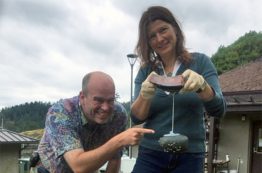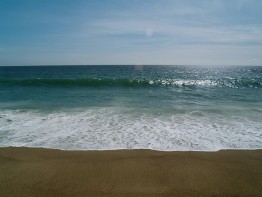In times of extreme duress, a shining beacon of hope can come from communities working together to support one another. The University of Washington Medical Center, in preparation for an influx of patients in the coming weeks, recently put out a call for medical supplies. Researchers from around the College of the Environment answered that call, realizing that much of what the Medical Center needed were common items found in research labs, and quickly mobilized to collect donations and drop them off at UW Surplus.
Read more »Creepy, slimy and flat-out gross: marine edition
To commemorate the season of all things spooky, gross and disturbing, we’ve compiled a list of some of the creepiest creatures to be found in the waters of the Pacific Northwest. To kick things off, we dip our toe into the salty waters of the Salish sea, where UW’s Friday Harbor Laboratories (FHL) are situated. These labs make the ideal setting to study the marine world, and provided us with no shortage of horrors to include in this list.
Read more »Piranha fish swap old teeth for new simultaneously
Piranha fish have a powerful bite. Their teeth help them shred through the flesh of their prey or even scrape plants off rocks to supplement their diet. Years ago, scientists discovered that piranhas lose all of the teeth on one side of their mouth at once and regrow them, presumably to replace dulled teeth with brand new sharp spears for gnawing on prey.
Read more at UW News »Inspired by Northern clingfish, researchers make a better suction cup
The finger-sized Northern clingfish employs one of the best suction cups in the world. A small disk on its belly can attach to wet, slimy, even rough surfaces and hold up to 230 times its own body weight. A University of Washington team inspired by the clingfish’s suction power set out to develop an artificial suction cup that borrows from nature’s design.
Read more at UW News »Five curious things we now know about our oceans
We swim in it, the sun sets over it, love songs are written about it and it covers 70% of the earth’s surface, yet we know so little about our deep blue sea. Oceans inspire some of the most puzzling questions and greatest discoveries on earth, and here at UW, researchers from across the sciences are dedicated to better understanding what’s in them, what’s changing about them, and how we can preserve these essential parts of our habitat.
Read more »





